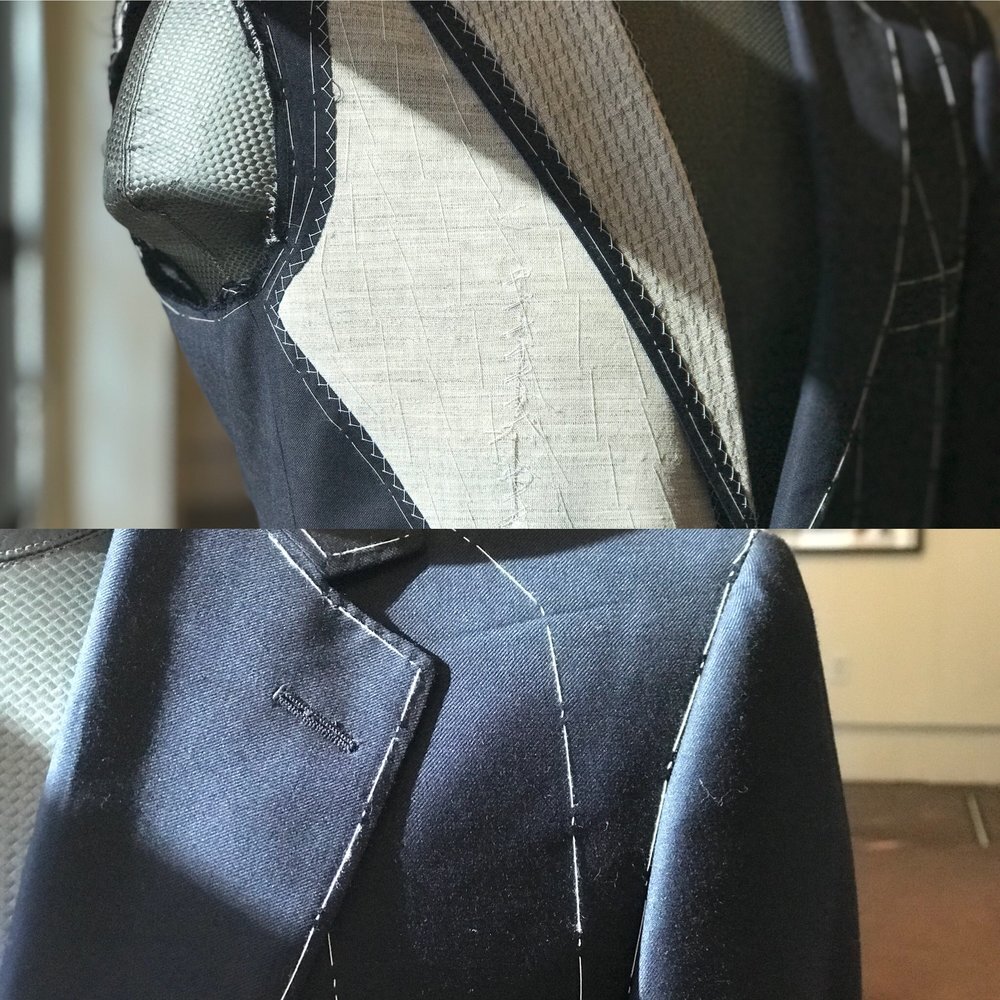Comprehending the Tailoring Process: From Textile Selection to Last Fitting for the Suitable Wardrobe
The tailoring process is a complicated interaction of art and scientific research, beginning with the critical choice of textile selection and culminating in the accurate changes of last fittings. Each fabric kind brings distinct high qualities that influence not just the aesthetic allure yet likewise the garment's long life and viability for various occasions.
Relevance of Fabric Choice
Choosing the ideal material is essential in the customizing procedure, as it straight influences the comfort, resilience, and overall visual of the final garment. The option of textile establishes the structure for the garment's efficiency, capability, and design. Different textiles possess one-of-a-kind properties, such as breathability, stretch, and weight, which can considerably influence exactly how the garment drapes and fits the body.

A customized item made from an appropriate textile not just showcases workmanship but additionally raises the user's self-confidence. Consequently, recognizing the subtleties of textile selection is vital for any kind of customizing venture. It makes certain that the last item not just satisfies the visual needs of the customer yet additionally straightens with functional requirements, consequently attaining an unified equilibrium in between kind and feature in the tailored closet.
Types of Fabrics and Their Usages
Recognizing the numerous sorts of materials readily available is essential for making informed choices throughout the tailoring process. Each material has special qualities that dictate its viability for details garments and events.
Cotton, understood for its breathability and gentleness, is perfect for sportswear and summer season clothing. Its convenience allows it to be tailored right into every little thing from shirts to outfits. Wool, on the various other hand, is favored for its warmth and framework, making it an excellent choice for formal fits and outerwear. Its natural elasticity aids garments maintain shape in time.
Silk exudes luxury and is light-weight, making it excellent for eveningwear and fragile shirts; nonetheless, it calls for careful handling as a result of its fragility. Linen, with its distinctive finish, is a preferred selection for cozy climates, supplying a crisp and ventilated feeling, yet it wrinkles easily, which might influence the garment's appearance.
Synthetic fabrics, such as polyester and nylon, offer longevity and resistance to wrinkles, making them appropriate for day-to-day wear and active garments. Comprehending these textile kinds and their residential or commercial properties enables much better decision-making, ensuring that each tailored item not only fits well yet likewise check out this site straightens with the designated purpose and event.
The Tailoring Techniques Described
The art of customizing depends on a selection of strategies that transform textile into well-fitted garments. Central to this process is pattern preparing, where a dressmaker produces design templates based on the customer's measurements and desired style. This first step makes sure that the garment will certainly fit the user correctly prior to any kind of cutting happens.
As soon as patterns are developed, cutting strategies come into play. Accuracy is paramount as inaccuracies can cause misfitting garments. Tailors frequently utilize various cutting approaches, such as single-layer cutting for complex designs and multiple-layer reducing for efficiency on common patterns.
Basting is another necessary strategy, permitting dressmakers to momentarily sew fabric assemble for a preliminary fitting (wedding suits perth). This approach supplies the opportunity to analyze the drape and general shape prior to final sewing
Seaming methods, consisting of flat-felled seams and French seams, enhance the garment's durability and aesthetic appeal. Tailors additionally utilize strategies such as interfacing and padding to give structure and shape to details locations, like collars and shoulders.
Last but not least, finishing techniques, including hemming and side finishing, make certain the garment's long life while giving a sleek look. Together, these methods create the foundation of effective customizing, resulting in splendid, custom-fit garments.

Fitting Adjustments and Factors To Consider
After the first customizing methods have been used and the garment is constructed, fitting changes end up being vital to attaining the ideal fit. These adjustments resolve numerous elements of the garment, guaranteeing it contours you can find out more to the see this site wearer's body shape and improves total look.

The increase of pants is an additional important factor; it needs to sit conveniently over the hips without creating pain, permitting convenience of movement. Hemming lengths for both trousers and skirts must show the user's favored design while respecting proportions.
Moreover, focus should be provided to the back of the garment, ensuring that there are no unsightly pulls or excess textile - wedding suits perth. Each adjustment ought to be thoroughly thought about, as even minor alterations can dramatically impact the general fit and visual of the customized item, inevitably leading to a wardrobe that emanates confidence and class
Preserving Your Tailored Wardrobe
Constantly comply with the care tag directions, which may suggest completely dry cleaning for delicate textiles or maker cleaning for more durable products. Avoid regular laundering, as this can use down the material and modify the garment's shape.
Storage is similarly crucial; use cushioned hangers for jackets and layers to preserve shoulder structure, and store trousers folded nicely or hung to avoid creasing. Secure garments from straight sunshine, which can discolor colors and damages fibers.
In addition, periodic assessments for small fixings can prevent larger issues. Look for loose switches, fraying seams, or indications of moth damage, resolving these problems without delay to preserve the garment's honesty.
Finally, consider seasonal rotation. Using tailored pieces in small amounts allows materials to recoup, prolonging their lifespan. By applying these maintenance techniques, you can make sure that your customized garments continue to be as pristine as the day you initially wore them, boosting your perfect wardrobe for years to come.
Final Thought
The tailoring procedure, including material option, knowledgeable methods, and specific suitable adjustments, plays an essential role in developing garments that enhance both comfort and style. Understanding the value of upkeep expands the life of tailored garments, strengthening their value in a well-curated closet.